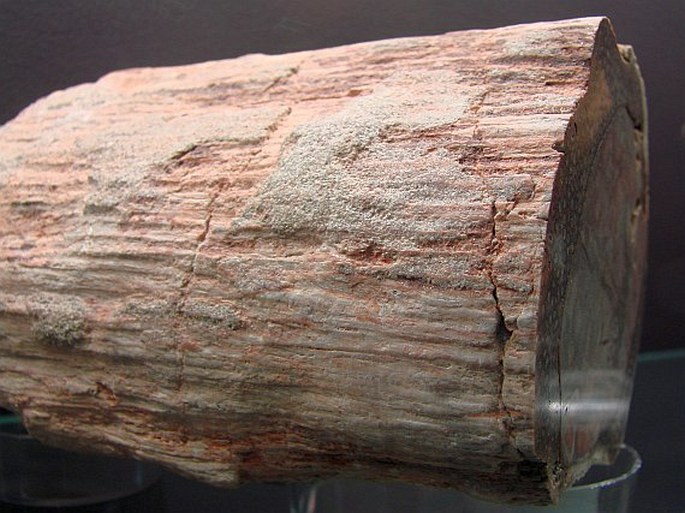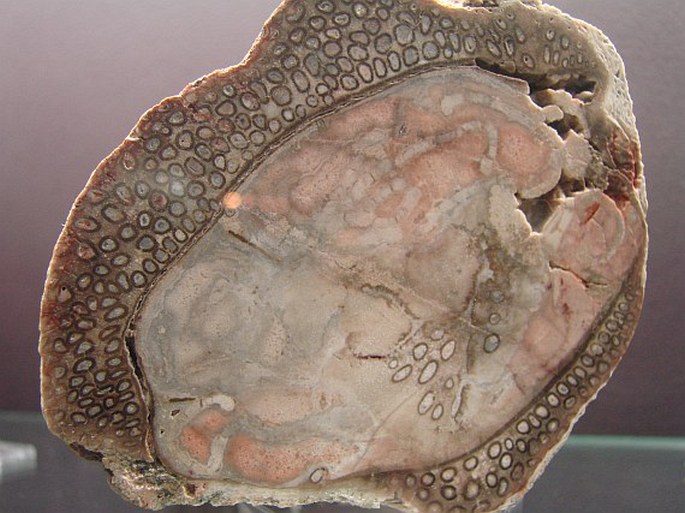Family: Psaroniaceae Stenzel

Distribution: Arboraceous type of extinct Palaeozoic ferns. Psaronius species grew over the whole of the Northern Hemisphere, were abundant in western and central Europe. The whole family Psaroniaceae reached its greatest development during the Upper Carboniferous and Lower Permian, i.e. before 325–251 million years ago. Today is still represented – in the tropical and subtropical areas – by several distantly related genera (e.g. Cyathea etc.).
Ecology: Species of the genus Psaronius grew in different habitats, often in marshes and swamps, but also in areas periodically flooded, only in the tropical climate.
Description: This tree ferns grew to a height of about 10(–15) m, petiolate and multi-pinnate leaves grew on top of the trunk, reached lengths of up to 3 m, characteristic for them was foliage type Pecopteris – the leaflets were sessile, entire, veins were not connected. The old leaves were deciduous, left a scar on the trunk. The trunk was enveloped in a huge mantle of aerial roots, the main root was weak. The sporangia were loose or in circular synangia.
Note: Plants of the family Psaroniaceae (together with mosses, lycopods, horsetails and other ferns) are significant component of Palaeozoic coal.


These images of the trunk and the cross section of the trunk from Nová Paka (Czechia) were taken in the Gallery of minerals and fossils „Geosvět Praha“.


